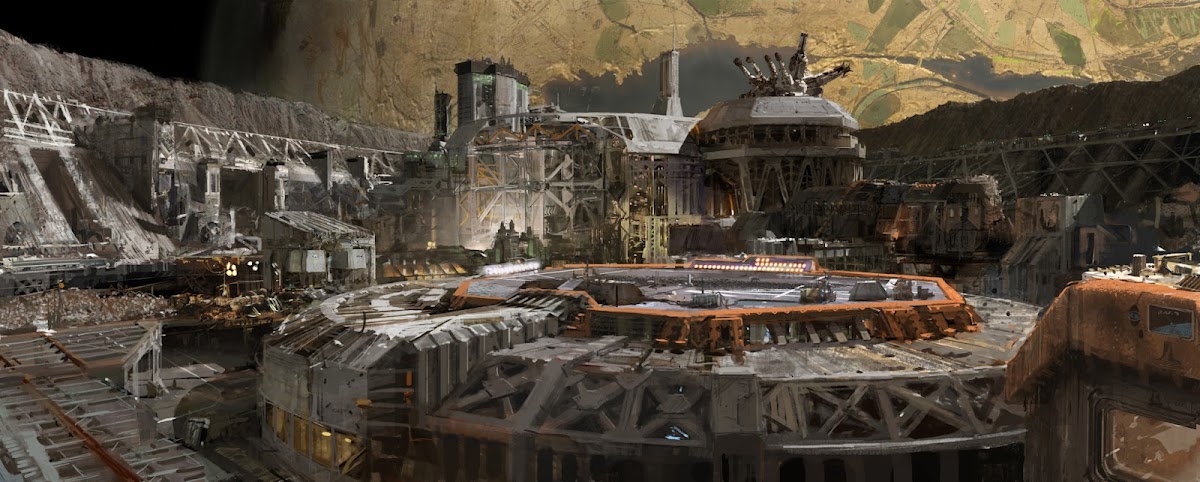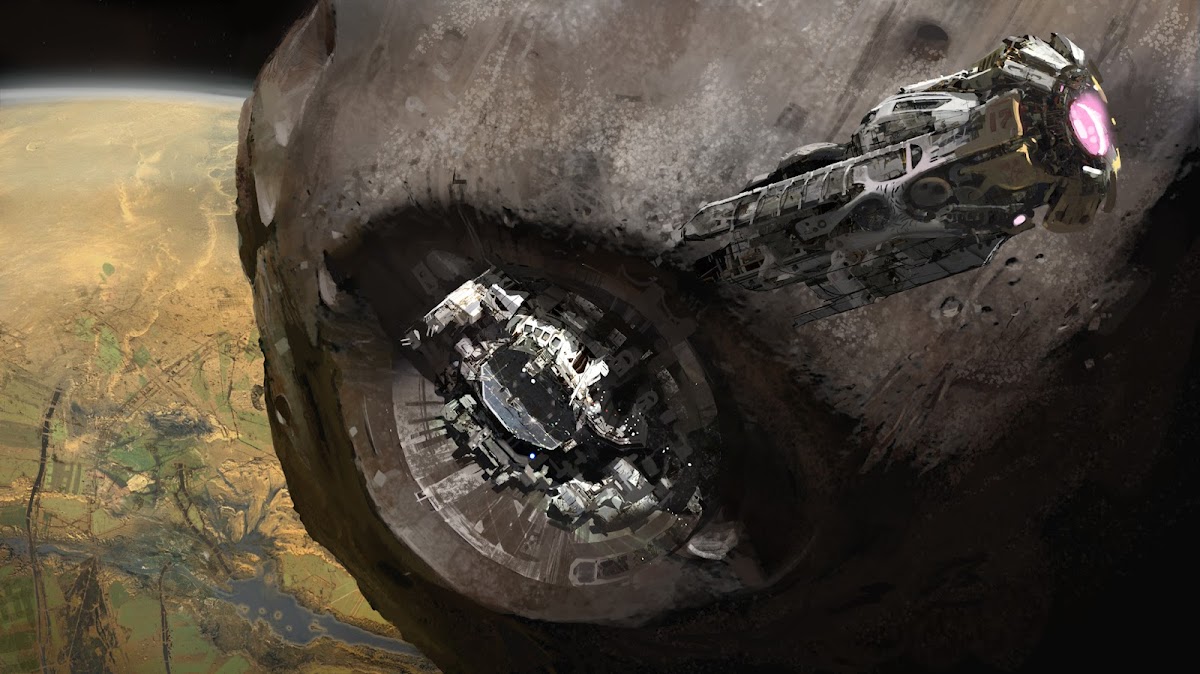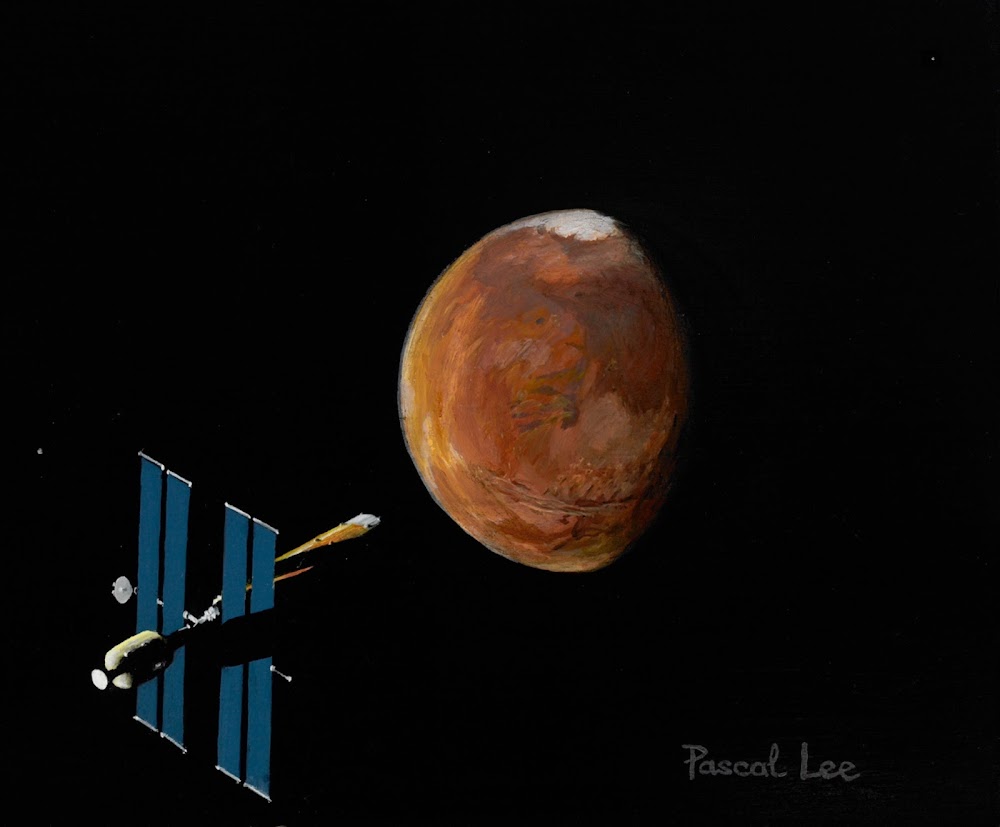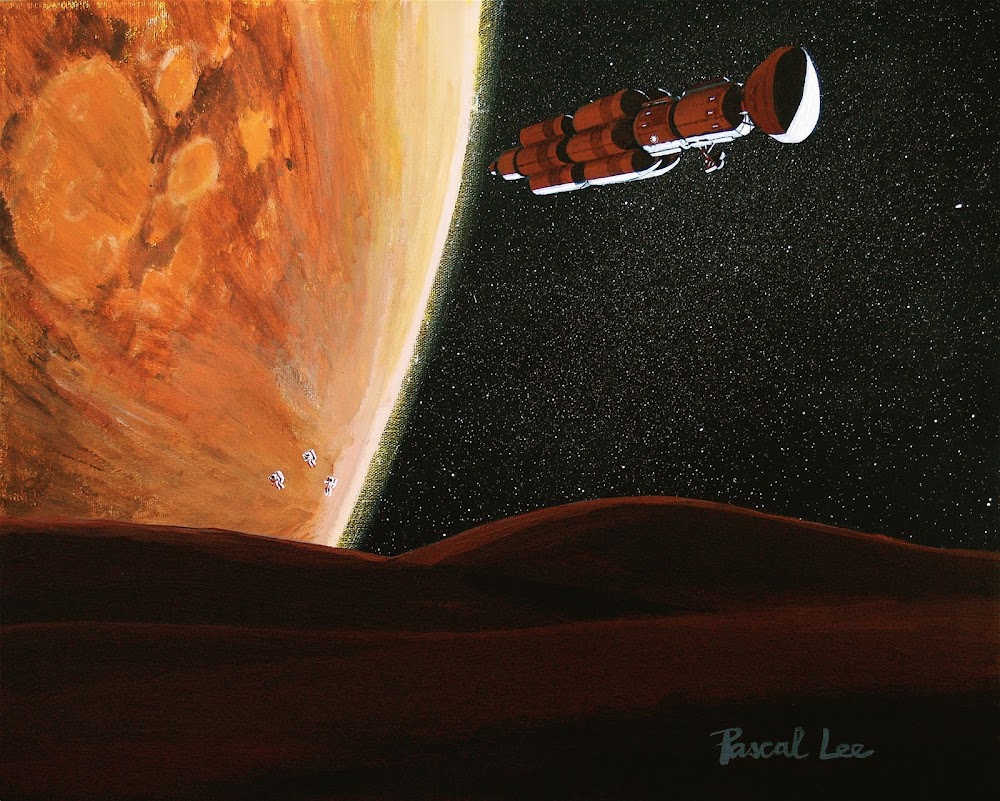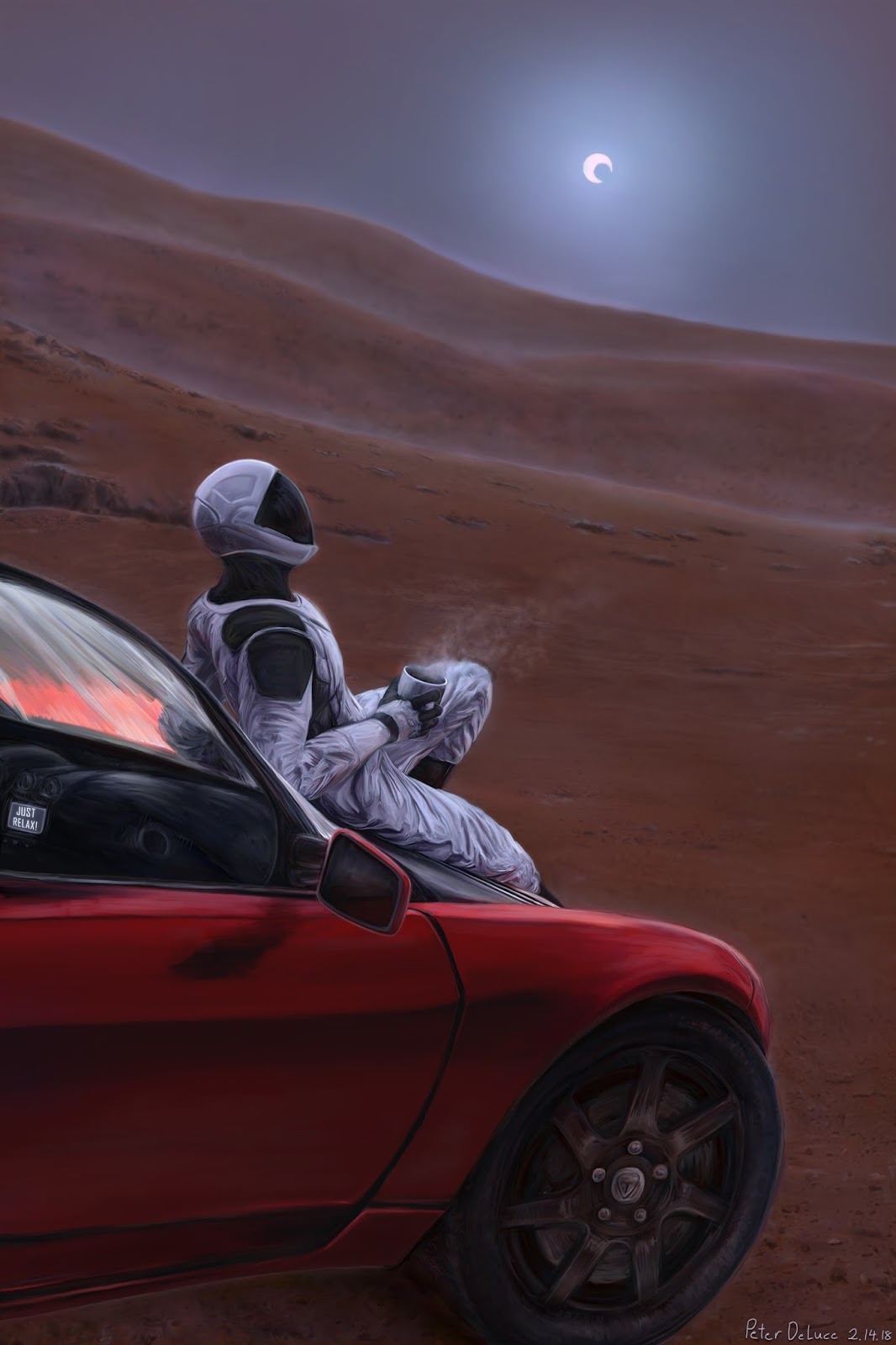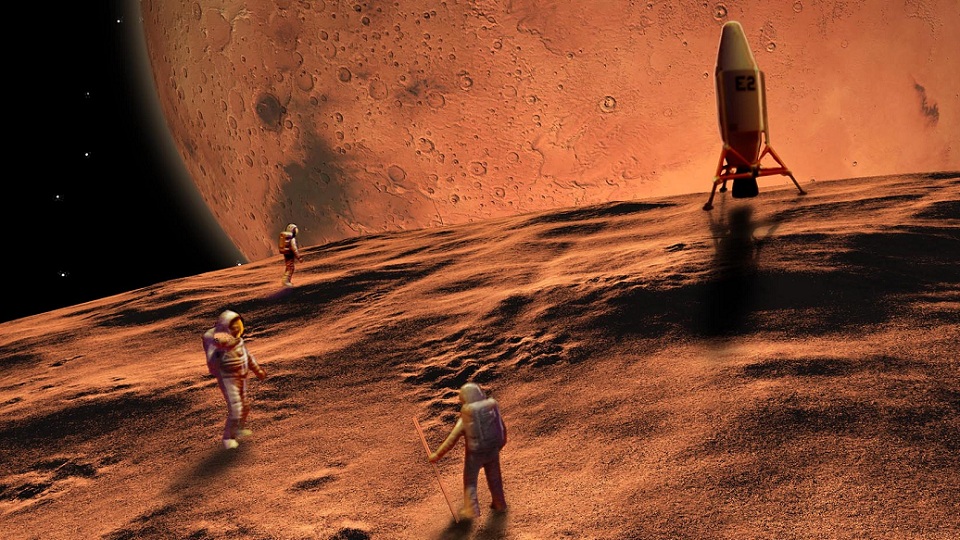In his popular science book "The World of Tomorrow", first published in 1980, Robin Kerrod depicted life as it might look in the 21st century. Today, living in the third decade of the 21st century, this depiction might seem overly technologically optimistic (like most past attempts to depict the future), but the book contains many illustrations that positively inspired a whole generation of children. Here, for example, book's cover illustration shows a spacecraft that has landed on Phobos, near a human base:
Showing posts with label Phobos. Show all posts
Showing posts with label Phobos. Show all posts
Saturday, August 5, 2023
Saturday, February 11, 2023
Terraformed & colonized Mars as it would be seen from space
Terraformed and colonized Mars as it would be seen from Phobos, the closest of two natural Martian moons, by British illustrator Mark Garlick. More of his art here.
Friday, December 9, 2022
Phobos as a space elevator for Mars
 Building a Martian space elevator would be complicated by the Martian moon Phobos, which is in a low orbit at ~6,028 km above the Martian surface and intersects the Equator regularly, thus getting in the way of a traditional geostationary space elevator. But there is an idea instead to build a space elevator from Phobos itself.
Building a Martian space elevator would be complicated by the Martian moon Phobos, which is in a low orbit at ~6,028 km above the Martian surface and intersects the Equator regularly, thus getting in the way of a traditional geostationary space elevator. But there is an idea instead to build a space elevator from Phobos itself.
Phobos is tidally locked to Mars (as the Moon is to Earth), where the same side of the moon stays facing the planet. A space elevator could extend down from Phobos to Mars 6,000 km, about 28 kilometers from the surface, and just out of the atmosphere of Mars. A similar space elevator cable could extend out 6,000 km the opposite direction that would counterbalance Phobos. In total the space elevator would extend out over 12,000 km which would be below Areostationary orbit of Mars (17,032 km).
A rocket launch would still be needed to get the rocket and cargo to the beginning of the space elevator 28 km above the surface. The surface of Mars is rotating at 0.25 km/s at the equator and the bottom of the space elevator would be rotating around Mars at 0.77 km/s, so only 0.52 km/s of Delta-v would be needed to get to the space elevator. Phobos orbits at 2.15 km/s and the outer most part of the space elevator would rotate around Mars at 3.52 km/s.
In our speculative Mars Colonization Timeline we have estimated such a Phobos-based space elevator could be built as soon as in 2080s–2090s. In adition to the space elevator there could be built a shuttle port at the summit of Pavonis Mons – the Martian volcano practically on the equator – for shuttles heading to and coming from Phobos space elevator. The summit of Pavonis Mons is standing 14 km above Mars' mean surface level (way above the denser part of the atmosphere), halving the needed trip to the shuttle platform at space elavator's lower tip 28 km above the surface.
Sunday, November 20, 2022
Terraformed Mars from human base on Phobos by David A. Hardy
 In 1994 the famous British space artist David A. Hardy created several retrofuturistic illustrations of a human base on Phobos, the closest of two natural Martian moons, in front of a terraformed Mars. The illustrations were created as cover art for two separate books. More of Hardy's Mars art here.
In 1994 the famous British space artist David A. Hardy created several retrofuturistic illustrations of a human base on Phobos, the closest of two natural Martian moons, in front of a terraformed Mars. The illustrations were created as cover art for two separate books. More of Hardy's Mars art here."Terraforming Mars" as cover art for Arthur C. Clarke's book "The Snows of Olympus" (1994):
"Terraformed Mars" as cover art (there are several slightly different versions of this illustration) for Carl Sagan's book "Pale Blue Dot: A Vision of the Human Future in Space" (1994):
Sunday, January 30, 2022
Spaceport on Phobos (concept art for Aliens: Colonial Marines)
Digital paintings of a spaceport on Phobos, the closest of two natural Martian moons. These images are concept art for Aliens: Colonial Marines (2013) - a first-person shooter (FPS) game set in the universe of Alien franchise. Unfortunately this location didn't make to the final game release.
In Alien's universe (depicted in Alien, Predator & Prometheus movies, games and books) Mars is the first planet colonized by humans in mid-21st century. There are many colonies and military bases on the planet established by both national and commercial entities and housing millions of people. On Phobos there is a commercial research facility experimenting with xenomorphs or aliens - a highly aggressive endoparasitoid extraterrestrial species.
In Alien's universe (depicted in Alien, Predator & Prometheus movies, games and books) Mars is the first planet colonized by humans in mid-21st century. There are many colonies and military bases on the planet established by both national and commercial entities and housing millions of people. On Phobos there is a commercial research facility experimenting with xenomorphs or aliens - a highly aggressive endoparasitoid extraterrestrial species.
Spaceship leaving Phobos' spaceport. Note the partially terraformed Mars below:
Sunday, November 28, 2021
Human mission to Martian moons Phobos and Deimos by Pascal Lee
 Over the years planetary scientist, the director of Haughton-Mars Project, Pascal Lee has created a set of paintings depicting human mission to the Martian moons Phobos and Deimos. Here are several of them. More of his Mars related paintings here.
Over the years planetary scientist, the director of Haughton-Mars Project, Pascal Lee has created a set of paintings depicting human mission to the Martian moons Phobos and Deimos. Here are several of them. More of his Mars related paintings here.
Spaceship approaching Mars with Phobos and Deimos in sight:
Landing on Deimos, the farthest and smallest of the two Martian moons:
Astronauts exploring Deimos:
Landing on Phobos, the closest and largest of the two Martian moons:
Friday, February 12, 2021
Spaceport on Phobos by Thomas Peters
Picture of the Day 12/02/2021 - Spaceport on Phobos, the closest of two natural Martian moons, by graphic designer and illustrator Thomas Peters (Drell-7). More of his space art here.


Tuesday, July 30, 2019
Mission to Phobos by Ludovic Celle
Picture of the Day 30/7/2019 - Spacecraft approaching the largest and closest of the two [asteroid size] Martian moons - Phobos - by French graphic artist Ludovic Celle. More of his Mars art here.
Sunday, August 26, 2018
SpaceX BFR spaceship approaching Phobos by Mack Crawford
Picture of the Day 26/8/2018 - SpaceX Big Falcon Rocket (BFR) spaceship (BFS) approaching Phobos by digital artist Mack Crawford (brickmack). More of his space concept art here.
(Open link in new tab to view ⇩ in full resolution)
Sunday, April 1, 2018
Starman on Mars by Peter DeLuce
Picture of the Day 1/4/2018 - SpaceX's Starman having his coffee on Mars and enjoying a solar eclipse by Phobos; created by illustrator Peter DeLuce. More of his art here.
(Open link in new tab to view ⇩ in full resolution)
Wednesday, February 28, 2018
Mars, Phobos and Deimos
Picture of the Day 28/2/2018 - Mars and its moons Phobos and Deimos; a collage by NASA.
(Open link in new tab to view ⇩ in HD wallpaper resolution)
Monday, May 30, 2016
Soviet lander on Phobos by Maciej Rebisz
Friday, February 12, 2016
Astronauts on Phobos by Ron Miller
Picture of the Day 12/2/16 - Astronauts on Phobos by sci-fi illustrator and writer Ron Miller. More of his Mars art here.
Subscribe to:
Posts (Atom)







